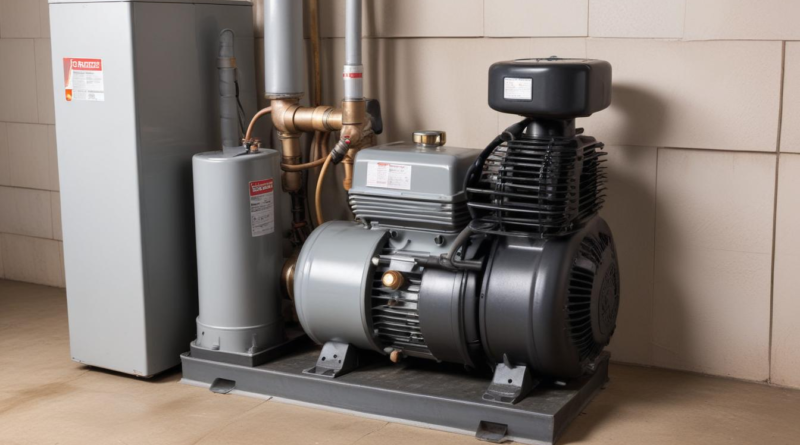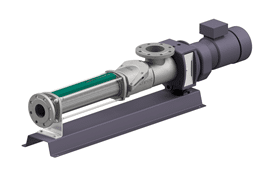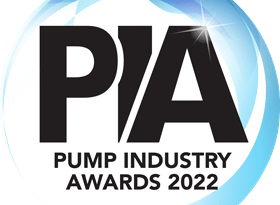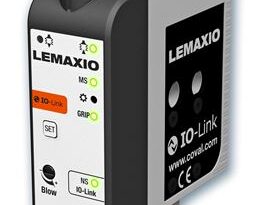how to handle pump overheating
Pump overheating occurs when a pump operates beyond its designed thermal limits, compromising performance and potentially leading to equipment failure. This condition can result from various factors, including inadequate cooling, excessive load, or mechanical inefficiencies. Recognizing the signs of pump overheating is essential for timely intervention and effective handling.
Indicators of Pump Overheating:
- Unexpected increase in operating temperature
- Decreased flow rate and pressure
- Unusual noises such as grinding or whining
- Visible signs of wear or damage on pump components
- Frequent cycling or shutdowns of the pump system
Impact of Overheating on Pump Performance:
| Effect | Description |
|---|---|
| Reduced Efficiency | Higher temperatures can decrease the efficiency of pump operation, leading to increased energy consumption. |
| Material Degradation | Excessive heat can cause deterioration of seals, bearings, and other critical components. |
| System Downtime | Overheating issues may result in unexpected shutdowns, disrupting operations and productivity. |
| Safety Risks | High temperatures can pose safety hazards, including the risk of fires or explosions in extreme cases. |
Thermal Management Mechanisms:
Effective thermal management is crucial in preventing pump overheating. Key strategies include:
- Ensuring adequate cooling systems are in place and functioning correctly.
- Regularly inspecting and maintaining lubrication systems to reduce friction and heat generation.
- Monitoring operational loads to prevent excessive strain on the pump.
- Implementing temperature sensors and automated controls for real-time temperature monitoring.
Understanding these factors provides a foundation for diagnosing pump overheating issues and developing targeted solutions to maintain optimal pump performance and longevity.
common causes of overheating
Several factors can contribute to pump overheating, each stemming from different aspects of pump operation and maintenance. Identifying these common causes is essential for effective handling and preventing future occurrences. The primary causes include:
- Insufficient Cooling: Adequate cooling is vital for maintaining optimal pump temperatures. Inadequate cooling can result from blocked cooling passages, malfunctioning cooling fans, or insufficient coolant levels, leading to a rapid increase in pump temperature.
- Excessive Load: Operating the pump beyond its designed capacity can cause it to work harder than intended, generating excessive heat. This overloading can stem from process demands exceeding pump specifications or fluctuating operational conditions.
- Clogged or Dirty Cooling Systems: Accumulation of debris, sediment, or scale in the cooling system can impede heat dissipation. Regular cleaning and maintenance are necessary to ensure unobstructed flow and efficient heat transfer.
- High Ambient Temperatures: Pumps operating in environments with elevated ambient temperatures may struggle to dissipate heat effectively. In such cases, additional cooling measures or environmental controls may be required.
- Faulty Components: Worn or damaged parts, such as seals, bearings, or impellers, can increase friction and heat generation. Regular inspection and timely replacement of faulty components are crucial to prevent overheating.
- Electrical Issues: Improper voltage supply, electrical surges, or faulty wiring can cause motors to overheat. Ensuring stable and correct electrical input is essential for maintaining safe operating temperatures.
- Poor Installation or Alignment: Misalignment of pump and motor shafts can lead to increased mechanical stress and heat production. Proper installation practices and alignment checks are necessary to minimize thermal stress.
- Maintenance Neglect: Infrequent or inadequate maintenance can result in the buildup of contaminants, degradation of lubrication, and unnoticed wear, all of which contribute to pump overheating.
- Fluid Viscosity: Pumping highly viscous fluids generates more heat due to increased friction and resistance. Selecting pumps suitable for the specific fluid properties and adjusting operational parameters can mitigate this issue.
- Running Dry: Operating a pump without adequate lubrication or fluid supply can cause rapid temperature rise. Implementing safeguards such as dry run protection and monitoring systems is essential to prevent overheating from dry operation.
Summary of Common Causes:
| Cause | Description |
|---|---|
| Insufficient Cooling | Blocked cooling passages or malfunctioning cooling systems prevent proper heat dissipation. |
| Excessive Load | Operating beyond pump capacity increases mechanical and thermal stress. |
| Clogged Cooling Systems | Debris and scale accumulation obstruct heat transfer pathways. |
| High Ambient Temperatures | Elevated surrounding temperatures challenge the pump’s ability to cool effectively. |
| Faulty Components | Worn seals and bearings raise friction and heat levels. |
| Electrical Issues | Incorrect voltage or faulty wiring causes motor overheating. |
| Poor Installation | Misalignment increases mechanical stress and thermal load. |
| Maintenance Neglect | Lack of regular upkeep leads to wear and overheating risks. |
| Fluid Viscosity | Pumping thick fluids generates more heat due to higher resistance. |
| Running Dry | Operating without sufficient lubrication or fluid causes rapid temperature rise. |
Addressing these common causes involves a combination of regular maintenance, proper installation, and vigilant monitoring of pump operations. Implementing solutions tailored to each specific cause can significantly reduce the risk of pump overheating and enhance overall system reliability.
troubleshooting techniques
Effective troubleshooting is essential for identifying and resolving the underlying causes of pump overheating. Implementing a systematic approach ensures accurate diagnosis and facilitates the development of appropriate solutions. The following techniques can aid in diagnosing and handling pump overheating issues:
Step-by-Step Troubleshooting Process:
- Verify Operating Conditions:
- Check the current operating temperature against the pump’s rated limits.
- Monitor flow rates and pressure levels to ensure they are within acceptable ranges.
- Confirm that the pump is operating under normal load conditions.
- Conduct a Visual Inspection:
- Inspect for any visible signs of leaks, corrosion, or physical damage to components.
- Examine the condition of seals, bearings, and impellers for wear or deterioration.
- Ensure that cooling passages and vents are free from obstructions.
- Assess Cooling Systems:
- Verify that cooling fans, heat exchangers, and coolant levels are functioning correctly.
- Clean any debris or buildup that may impede heat dissipation.
- Test the operation of temperature sensors and automated cooling controls.
- Evaluate Electrical Components:
- Measure input voltage and ensure it matches the pump’s specifications.
- Inspect wiring for signs of wear, overheating, or loose connections.
- Test motor windings for insulation integrity and resistance values.
- Analyze Mechanical Load:
- Determine if the pump is subjected to excessive or fluctuating loads.
- Assess whether process demands align with the pump’s capacity.
- Identify and rectify any blockages or restrictions in the system that may cause overloading.
- Implement Diagnostic Tools:
- Infrared Thermography: Utilize thermal cameras to identify hot spots and temperature anomalies.
- Vibration Analysis: Detect imbalances, misalignments, or bearing failures through vibration monitoring.
- Flow and Pressure Testing: Use flow meters and pressure gauges to evaluate system performance.
- Review Maintenance Records:
- Examine past maintenance activities to identify patterns or recurring issues.
- Ensure that all scheduled maintenance tasks have been performed timely and correctly.
- Update records with current findings and corrective actions taken.
Common Diagnostic Tools and Their Applications:
| Tool | Application |
|---|---|
| Infrared Thermometer | Measures surface temperatures to identify overheating areas. |
| Multimeter | Checks electrical parameters such as voltage, current, and resistance. |
| Vibration Analyzer | Detects mechanical imbalances, misalignments, and bearing faults. |
| Flow Meter | Monitors the flow rate to ensure it meets operational specifications. |
| Pressure Gauge | Evaluates system pressure to identify restrictions or leaks. |
Systematic Approach to Troubleshooting:
Adopting a structured methodology enhances the effectiveness of troubleshooting efforts. Consider the following approach:
- Identify the Problem: Clearly define the symptoms and gather relevant data.
- Isolate Potential Causes: Narrow down possible factors contributing to pump overheating.
- Test Hypotheses: Use diagnostic tools and techniques to confirm or eliminate potential causes.
- Implement Solutions: Apply the appropriate corrective measures based on identified issues.
- Verify Effectiveness: Monitor the pump’s performance post-intervention to ensure the overheating issue is resolved.
- Document the Process: Record all findings, actions taken, and outcomes for future reference.
By following these troubleshooting techniques, operators can effectively diagnose and address the root causes of pump overheating, ensuring reliable and efficient pump performance. Implementing a thorough and methodical approach not only resolves current issues but also aids in preventing future occurrences, contributing to the overall stability and longevity of pump systems.
preventive maintenance strategies
 Implementing robust maintenance practices is essential for mitigating the risk of pump overheating and ensuring optimal performance. A strategic approach to preventive maintenance not only addresses current issues but also anticipates potential problems, thereby enhancing the longevity and reliability of pump systems. Key strategies include:
Implementing robust maintenance practices is essential for mitigating the risk of pump overheating and ensuring optimal performance. A strategic approach to preventive maintenance not only addresses current issues but also anticipates potential problems, thereby enhancing the longevity and reliability of pump systems. Key strategies include:
Scheduled Inspections and Routine Maintenance:
Regularly scheduled inspections help identify wear and tear before they escalate into significant problems. Establishing a maintenance calendar that outlines specific tasks and their frequencies ensures that critical components are consistently monitored and maintained.
- Daily Checks:
- Inspect for visible leaks or unusual noises.
- Monitor operating temperatures and pressures.
- Weekly Maintenance:
- Check and replenish lubrication levels.
- Clean cooling systems and remove any debris.
- Monthly Tasks:
- Examine electrical connections and wiring for signs of wear.
- Test the functionality of temperature sensors and alarms.
- Quarterly and Annual Maintenance:
- Conduct comprehensive inspections of seals, bearings, and impellers.
- Replace worn or damaged components as needed.
- Perform calibration of monitoring and control systems.
Lubrication Management:
Proper lubrication minimizes friction between moving parts, thereby reducing heat generation. Selecting the appropriate lubricant for the specific pump type and adhering to manufacturer-recommended lubrication schedules are critical practices.
- Lubricant Selection: Use high-quality lubricants that are compatible with pump materials and operating conditions.
- Lubrication Schedule: Maintain a consistent schedule for applying lubricants to prevent dry operation and excessive wear.
- Monitoring Lubricant Condition: Regularly inspect lubricant for contamination or degradation and replace as necessary.
Component Replacement and Upgrades:
Proactively replacing components prone to wear can prevent unexpected failures that may lead to overheating. Upgrading to more efficient or durable parts can also enhance pump performance.
- Seals and Gaskets: Replace seals and gaskets at regular intervals to prevent leaks and maintain proper lubrication.
- Bearings: Monitor bearing conditions and replace them when signs of wear or damage are evident.
- Impellers: Ensure impellers are free from debris and wear, and replace if necessary to maintain optimal flow rates.
- Motor Components: Upgrade motors with better cooling capabilities or higher efficiency ratings to reduce thermal stress.
Environmental Control:
Maintaining an optimal operating environment is crucial for preventing pump overheating. Controlling ambient temperature and ensuring adequate ventilation can significantly impact thermal management.
- Temperature Regulation: Implement climate control systems in pump rooms to maintain stable ambient temperatures.
- Ventilation: Ensure proper airflow around the pump to facilitate heat dissipation.
- Dust and Debris Control: Keep the environment clean to prevent contamination of cooling systems and moving parts.
Monitoring and Automation Systems:
Advanced monitoring systems provide real-time data on pump performance, enabling early detection of overheating trends. Automation can facilitate timely interventions and reduce the reliance on manual inspections.
- Temperature Sensors: Install sensors to continuously monitor pump temperatures and trigger alarms when thresholds are exceeded.
- Flow and Pressure Gauges: Use these instruments to track operational parameters and identify deviations that may indicate impending issues.
- Automated Shutdown Systems: Implement systems that can automatically shut down the pump in case of critical overheating to prevent damage.
- Data Logging and Analysis: Utilize software tools to log performance data and analyze trends for predictive maintenance.
Training and Documentation:
Ensuring that maintenance personnel are well-trained and that maintenance procedures are thoroughly documented enhances the effectiveness of preventive strategies.
- Staff Training: Provide regular training on pump operation, maintenance techniques, and troubleshooting methods.
- Maintenance Manuals: Maintain up-to-date documentation detailing maintenance schedules, procedures, and component specifications.
- Record Keeping: Keep detailed records of all maintenance activities, inspections, and repairs to track the pump’s history and identify patterns.
Preventive Maintenance Schedule Example:
| Task | Frequency | Description |
|---|---|---|
| Visual Inspection | Daily | Check for leaks, unusual noises, and monitor operating temperatures. |
| Lubrication | Weekly | Apply and check lubricant levels to ensure proper lubrication. |
| Cooling System Cleaning | Weekly | Remove debris and ensure unobstructed cooling passages. |
| Electrical Inspection | Monthly | Examine wiring and connections for signs of wear or damage. |
| Component Replacement | Quarterly | Replace seals, bearings, and other wear-prone parts as necessary. |
| System Calibration | Annual | Calibrate sensors and control systems to ensure accurate monitoring. |
Adopting these preventive maintenance strategies facilitates effective handling of potential overheating issues by addressing them proactively. By maintaining a disciplined maintenance regimen and leveraging appropriate solutions, operators can significantly reduce the incidence of pump overheating, ensuring continuous and efficient pump operation.
when to seek professional help
Recognizing the appropriate moments to engage professional assistance is crucial for effectively addressing complex issues related to pump overheating. While routine inspections and basic troubleshooting can be managed internally, certain situations demand the expertise of trained specialists to ensure safety, compliance, and optimal pump performance.
Situations Requiring Professional Assistance:
- Persistent Overheating: When overheating issues continue despite implementing standard troubleshooting techniques, indicating deeper underlying problems.
- Complex Mechanical Failures: Situations involving significant component damage, such as impeller or bearing failures, which require specialized repair or replacement.
- Electrical Malfunctions: Issues related to motor wiring, electrical surges, or control system failures that necessitate certified electricians or motor specialists.
- System Design Flaws: When overheating is traced back to inadequate system design or improper pump selection, requiring engineering expertise to redesign or optimize the system.
- Safety Hazards: Any condition that poses a risk of fire, explosion, or other safety threats that must be addressed immediately by professionals.
- Regulatory Compliance: Ensuring that repairs and modifications meet industry standards and regulatory requirements, which often requires documentation and certified workmanship.
- Advanced Diagnostic Needs: Utilizing specialized diagnostic tools and techniques, such as vibration analysis or thermal imaging, which are typically beyond the scope of in-house capabilities.
Benefits of Seeking Professional Help:
- Expertise and Experience: Professionals bring specialized knowledge and experience, enabling accurate diagnosis and effective solutions for complex overheating issues.
- Time Efficiency: Experienced technicians can resolve issues more quickly, minimizing downtime and restoring pump operations promptly.
- Access to Advanced Tools: Professionals have access to sophisticated diagnostic and repair tools that may not be available in-house.
- Comprehensive Solutions: Professionals can provide holistic solutions that address both the immediate problem and prevent future occurrences.
- Cost-Effectiveness: While there is an upfront cost, professional interventions can prevent more extensive and expensive damages in the long run.
- Compliance and Safety: Ensuring that all repairs and modifications adhere to safety standards and regulatory requirements, reducing liability and ensuring safe operations.
Choosing the Right Professional Service:
Selecting the appropriate professional service is vital for effective resolution. Consider the following factors:
- Certification and Licensing: Ensure that the service provider holds the necessary certifications and licenses for pump repair and maintenance.
- Reputation and Reviews: Research the provider’s reputation through reviews, testimonials, and industry referrals to gauge their reliability and quality of service.
- Specialization: Choose a provider that specializes in the type of pump and system in use, ensuring they have relevant experience and expertise.
- Response Time: Evaluate the provider’s ability to respond promptly, especially in urgent situations where pump overheating poses significant operational risks.
- Cost Transparency: Opt for services that offer clear and upfront pricing to avoid unexpected expenses and ensure budget alignment.
- Comprehensive Services: Select a provider that offers a full range of services, including installation, maintenance, repair, and consulting, to address various needs comprehensively.
Preparing for Professional Intervention:
To facilitate an efficient and effective service process, proper preparation is essential:
- Document Symptoms and Observations: Provide detailed information about the overheating issues, including when they occur, any patterns observed, and previous troubleshooting steps taken.
- Access to Pump Systems: Ensure that the professionals have adequate access to all relevant areas and components of the pump system.
- Provide Maintenance Records: Share historical maintenance and repair records to help professionals understand the pump’s history and identify recurring issues.
- Ensure Safety Measures: Implement necessary safety protocols and ensure that the working environment is safe for technicians to perform their tasks.
- Establish Clear Communication: Define clear lines of communication regarding expectations, timelines, and any specific requirements or constraints.
Summary of When to Seek Professional Help:
| Condition | Action |
|---|---|
| Persistent Overheating | Contact a pump specialist to diagnose and resolve underlying issues. |
| Complex Mechanical Failures | Engage mechanical repair experts for component replacement and system restoration. |
| Electrical Malfunctions | Hire certified electricians or motor technicians to address electrical issues. |
| Safety Hazards | Immediately seek professional intervention to mitigate risks and ensure safe operations. |
| System Design Flaws | Consult with engineering professionals to redesign or optimize the pump system. |
| Advanced Diagnostic Needs | Utilize specialized services for in-depth analysis and accurate diagnosis. |
Engaging professional help at the right time ensures that pump overheating issues are handled effectively, safeguarding equipment integrity and maintaining operational continuity. Leveraging expert solutions not only resolves immediate problems but also contributes to the long-term reliability and efficiency of pump systems.




